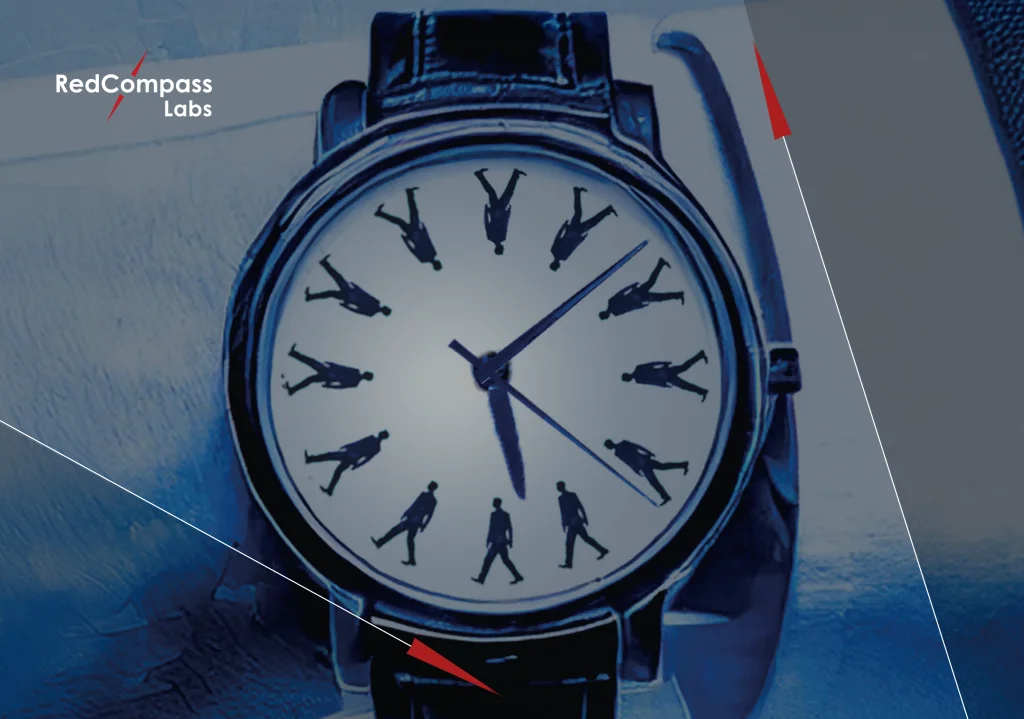We explore seven of the biggest 2025 payments trends. From regulations and AI to open banking and cross-border payments, here’s what you should keep an eye on.
1. SEPA Instant Payments will arrive in Europe
Next year, the SEPA Instant Payments Regulation will take effect. European banks have until 9th January 2025 to be able to receive instant payments, and 9th October 2025 to send them. In between, they’ll have just three months to test and implement a Verification of Payee service to manage authorized-push payment fraud. They must do all of this while figuring out how to screen sanctions lists daily, implement new liquidity management strategies, and manage their customer experience. It’s going to be a big challenge. If 2024 was tough for European banks, 2025 is going to be far more painful.
That said, the rewards could be transformative. Around 80 countries now have an instant payment scheme. Among the most notable is India’s United Payments Interface (UPI), which boasts 300 million users despite having only launched in 2016. UPI has boosted financial inclusion, strengthened supply chains, and released billions tied up in inefficient payment networks. It’s done so by making it very easy for people to make payments via QR codes, and integrating mobiles, cash, wallets and account-to-account payments. Will SEPA Instant take Europe on a similar route?
2. ISO 20022 co-existence ends
There are also major deadlines for ISO 20022 in 2025. US banks will have until 10th March 2025 to switch to the ISO 20022 messaging standard for FedWire payments, while the rest of the world has until November 2025 for the SWIFT coexistence period to officially end.
Banks that have used a translator must wave goodbye to temporary fixes in 2025 and say hello to a permanent solution. That means understanding the full impact of this change across their entire organization. Getting ready will take time. Anecdotal evidence suggests many banks are not yet prepared.
3. AI Adoption Grows Significantly
AI will continue to be one of the most transformative payment trends in 2025.
AI models that can draw from (as yet) untapped human expertise will arrive next year. Payments knowledge that lives behind firewalls and within payment experts’ heads will be used to train LLMs (large language models). AI assistants will be tuned for accuracy, not speed. With the help of AI assistants, payment experts will prepare, review, and deliver documentation for payments modernization projects in half the time and at half the cost.
These multi-agent AI models will work 24/7, allowing analysts to focus on design and review. Free from the mundanity of typing, the productivity and time benefits will be enormous.
Now, that may sound like AI hype. But these products are already emerging. AnalystAccelerator.ai, a multi-agentic AI model engineered specifically for payments modernization, cut the time it took to create business requirements from 25 days to less than three hours for a tier one European bank.
Just over half of banks (54%) say they plan to use AI in upcoming payment modernization projects, while six in ten (62%) are actively or aggressively exploring the technology.
As a bank, if you don’t embrace AI in 2025, you will face bigger costs and slower change than those you are competing with. But if you leverage the billions invested in AI, use the tools available, and gather industry knowledge, you might just have a chance to keep up with the rate of change.
4. Account-to-Account grows (enabled by Open Banking, interoperability and the convergence of cards, payments and wallets)
The latter months of 2024 have been big for Open Banking. Within a three-week period in November, we saw the introduction of the UK’s new National Payments Vision, which placed a firm emphasis on Open Banking (In fact, HM Treasury said Account to account (A2A) payments were a “strategic priority.”). New Open Banking rules were introduced in the US by the Consumer Finance Protection Bureau. And the Retail Payments Activities Act – Canada’s Open Banking framework – opened for registration.
With PSD3 on the horizon in Europe, it’s fair to assume that A2A payments will expand beyond traditional transfers to embedded payments, point-of-service solutions, and cross-rail transactions. This growth will be supported by maturing regulations, improved infrastructure, and a growing range of use cases. From bill payments and e-commerce to payroll and business-to-business transactions, A2A is steadily gaining relevance beyond traditional peer-to-peer transfers.
The question is whether we are transitioning from merely enabling A2A payments to driving meaningful adoption at scale.
One thing is for certain, card networks are recognizing the shift and doubling down on A2A. Visa’s recent strategic acquisitions highlight a growing emphasis on competing in the value-added services space. However, challenges remain. Solutions like Venmo and Zelle have thrived in the P2P space, while FedNow has not yet captured the same momentum for broader use cases. As we navigate what feels like a “messy middle,” the industry must address the activation, adoption, and unlocking of A2A’s full value.
The ultimate goal is scale—but the question remains: is 2025 the year we arrive or is the real tipping point still on the horizon?
5. Interoperable cross-border instant payments?
Cross-border payments are set to increase 5% every year until 2027 according to JP Morgan. That represents a market worth $250 trillion. But international payments are known for being time-consuming and expensive. And with the number of correspondent banks continuing to decline, in some ways, they’re getting harder to do.
The G20 cross-border payments program aims to enhance the speed, transparency, accessibility, and affordability of cross-border payment services. Since the roadmap’s endorsement in 2020, significant progress has been made in foundational analyses of its 19 “building blocks,” according to The Committee on Payments and Market Infrastructures (CPMI).
In 2025, we’ll likely see more real-time payment systems expanding internationally to meet these demands.
UPI, India’s world-leading interoperable instant payments scheme, has already linked with several international systems, including Singapore’s PayNow and France’s Lyra. UPI’s 300 million monthly users can now make cross-border instant payments for free with just a smartphone, online banking, and an internet connection.
But while instant payments are solving major challenges in cross-border payments (speed and cost), they’re also highlighting others. Linking payment schemes across multiple jurisdictions is hard. Each region has its own regulations, anti-money laundering laws, and currency controls. It also introduces new fraud and security risks, and problems with the customer experience. We will need to figure these out to truly unlock the benefits.
With SEPA Instant going live, EU banks will need to understand how they manage overseas instant payments to regions that have not yet enabled instant payments domestically. That’s going to be a big challenge.
6. Financial crime grows, collaboration is needed
Fraud made up $500 billion of the $3.1 trillion in global illicit funds in 2023, according to a Nasdaq report. It is now estimated to be the second-largest source of income for criminals worldwide—just behind drug trafficking and slightly ahead of human trafficking. It is also the most common crime in England and Wales, with 3.6 million incidents between June 2023 and 2024. The situation across Europe is equally dire, with losses from fraudulent transactions totaling €4.3 billion in 2022 and €2 billion in the first half of 2023. With the rise of new techniques and deepfake scams, it is hard to see how 2025 will be any better.
This year marked a turning point in the global discussion of fraud prevention. The UK Payment System Regulator’s landmark move to mandate reimbursements for APP fraud up to £85,000 represents a huge step forward in protecting consumers from financial losses. However, it will do little to solve the problem.
Splitting consumer losses between banks does not prevent fraud. We need to stop it at the source. Given that 77% of fraud originates online, particularly on Meta-owned platforms like Facebook and Instagram, social media firms should be held accountable. Whether through penalties, financial contributions, or awareness campaigns, social media must take responsibility for the role they play in enabling scams.
As we look to 2025, Australia’s approach may serve as a better model. Its proposed unified scam-prevention network shows that an integrated, ecosystem-wide effort is not only possible—it’s essential. It’s time to move from subsidizing criminals to proactively preventing growing fraud levels through collaboration, technology, and public awareness. Particularly as new fraud is emerging.
7. Canadian banks look ahead to the Real-time Rail
Last but certainly not least, 2025 will be the year Canadian banks get ready for instant payments.
The Real-time Rail (RTR) is expected to launch no earlier than 2026 (though industry insiders think it could be later) following an announcement by Payments Canada earlier this year. A specific date is yet to be announced. What we do know is that RTR testing will begin in 2025 and industry testing with start in 2026, which means banks need to be getting ready pretty much immediately if they are to hit the ground running.
While Canada lags other nations, banks can look to other regions such as Europe, for lessons to learn.
How to make the most of 2025 payment trends
As 2025 approaches, the payments industry is at a pivotal moment. From the rapid evolution of instant payment systems to the transformative potential of AI and Open Banking, the pace of change shows no signs of slowing. However, these advancements come with challenges, including tighter regulatory deadlines, growing fraud concerns, and the need for greater interoperability across borders.
Banks that invest in modernization, leverage cutting-edge technologies, and foster collaboration will be best positioned to thrive. Those that do not, will be left behind.
If you’re looking for help on any of these 2025 payment trends, speak to RedCompass Labs. We are experts in Instant Payments, ISO 20022, AI Open Banking, financial crime, and everything in between. Whatever your ambitions, we can help you to embrace the future of payments. Reach out to the team today.
Share this post
Written by

David Patrick
Head of Payments Strategy, RedCompass Labs






